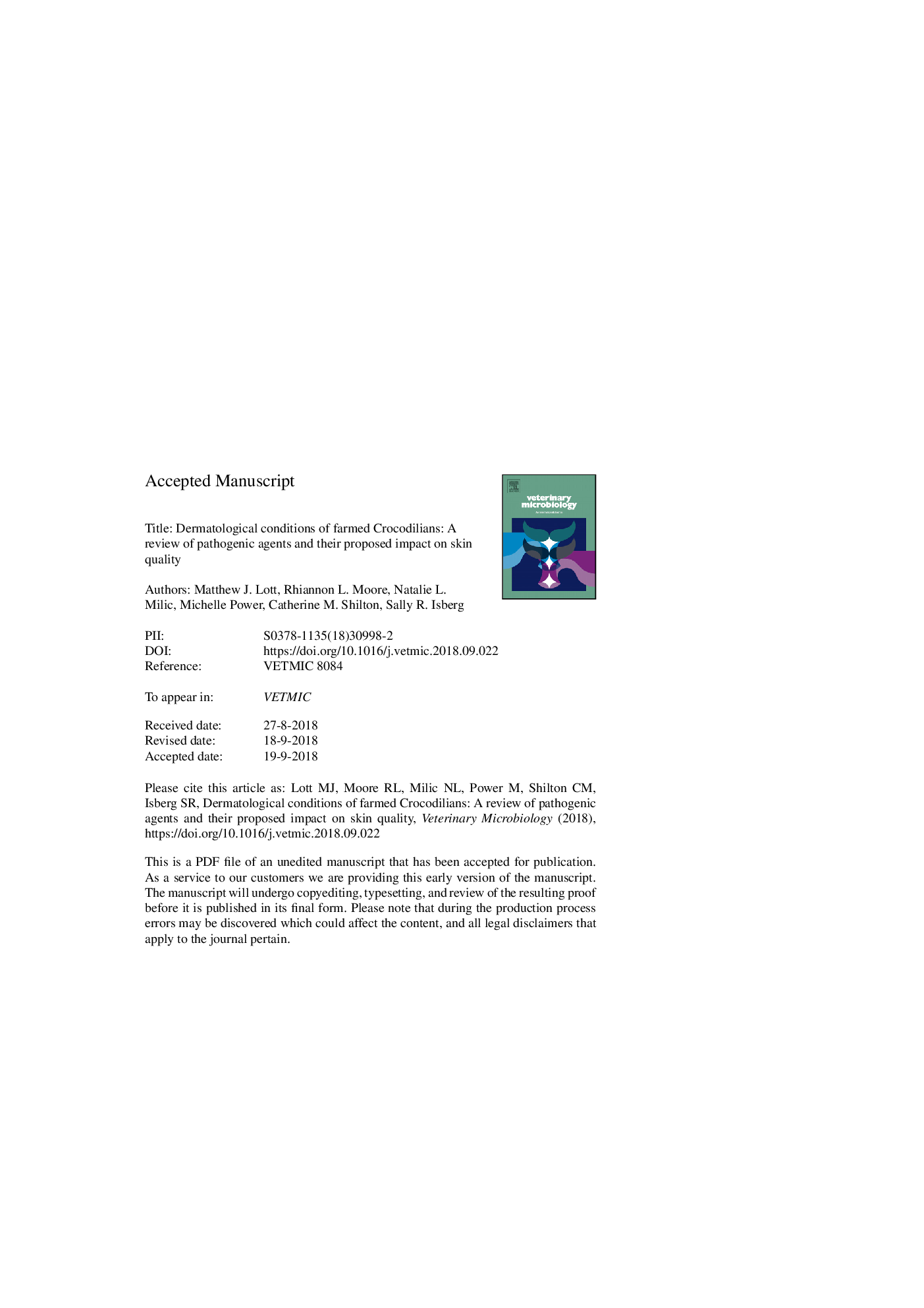| Article ID | Journal | Published Year | Pages | File Type |
|---|---|---|---|---|
| 11025816 | Veterinary Microbiology | 2018 | 41 Pages |
Abstract
The control of pathogens that target crocodilian skin is essential to the long-term success and sustainability of intensive farming operations worldwide. To understand the impact these pathogens may have on the skin, a brief overview of skin histology is given. A review of the known viral, bacterial, fungal and helminth taxa associated with skin conditions in commercially significant crocodilian species is presented. Best management practices are discussed, with an emphasis on addressing extrinsic factors that influence transmission and pathogenicity. It is argued that, in the past, reduced immune function arising from inadequate thermal regulation was the leading cause of skin disease in captive crocodilians. Consequently, innovations such as temperature control, coupled with the adoption of more stringent hygiene standards, have greatly reduced the prevalence of many infectious skin conditions in intensively farmed populations. However, despite improvements in animal husbandry and disease management, viral pathogens such as West Nile virus, herpesvirus and poxvirus continue to afflict crocodilians in modern captive production systems.
Keywords
Related Topics
Life Sciences
Agricultural and Biological Sciences
Animal Science and Zoology
Authors
Matthew J. Lott, Rhiannon L. Moore, Natalie L. Milic, Michelle Power, Catherine M. Shilton, Sally R. Isberg,
